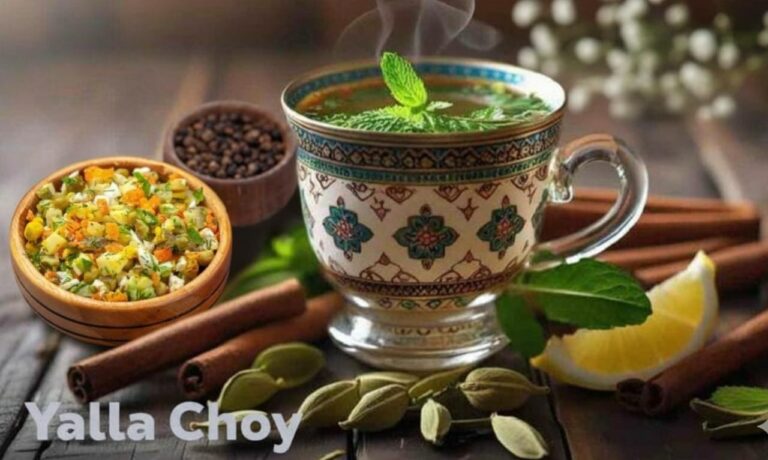Mannacote: The Natural Industry, and Sustainability
Introduction: What Is Mannacote
In today’s world, sustainability is more than a trend—it’s a necessity. As industries seek greener alternatives, one innovative material has captured global attention: Mannacote.
This biodegradable natural coating is derived from plant-based polysaccharides, starches, and edible gums, offering a safe and effective way to protect, preserve, and nourish both plants and materials.
Mannacote isn’t just another eco-product; it’s a multi-purpose solution that bridges agriculture, food preservation, and industrial protection. With its ability to release nutrients slowly, resist corrosion, and fully biodegrade, it represents the future of sustainable technology.
The Origin and Meaning of Mannacote
The word Mannacote symbolises nourishment and protection. It blends manna—a biblical term for divine nourishment—with cote, meaning shelter.
This name perfectly reflects its purpose: to nourish life while protecting the environment.
Originally developed as an eco-friendly agricultural coating, Mannacote has evolved to serve various industries. Today, it’s recognised as a natural alternative to synthetic fertilisers, plastic food coatings, and chemical surface protectants.
The Science Behind Mannacote: How It Works
At its core, Mannacote operates on biopolymer technology. Its composition includes natural polysaccharides, starches, and biodegradable gums that form a flexible yet durable coating.
When applied, these materials create a thin film or capsule around the target—whether that’s a seed, fruit, or metal surface.
Here’s how it works:
- Encapsulation: Nutrients or protective compounds are enclosed within the Mannacote layer.
- Gradual Breakdown: The coating decomposes naturally under moisture and microbial activity.
- Controlled Release: Nutrients are released steadily, ensuring balanced feeding over time.
- Eco Degradation: Once its job is done, Mannacote safely biodegrades into the soil, leaving no toxic residue.
This slow-release mechanism not only maximises efficiency but also reduces pollution—making it an ideal choice for modern, environmentally conscious applications.
Agricultural Applications: A New Era in Sustainable Farming
For farmers and gardeners, Mannacote is a game-changer. It acts as both a fertiliser enhancer and a soil conditioner, enriching the earth while minimising environmental harm.
Key Benefits for Agriculture:
- Gradual Nutrient Delivery: Prevents nutrient loss and ensures plants receive a consistent supply.
- Improved Soil Health: Encourages beneficial microbial activity, improving fertility.
- Enhanced Root Growth: Strengthens plants against stress and pests.
- Reduced Chemical Dependency: Cuts the need for synthetic fertilisers and pesticides.
Mannacote also plays a major role in seed treatment. When used as a seed coating, it increases germination rates, early root development, and disease resistance.
Farmers report up to 25–30% higher yields, alongside improved soil structure and water retention.
By embracing Mannacote, growers not only achieve better results but also contribute to a healthier, chemical-free ecosystem.
Food Preservation & Post-Harvest Protection
Beyond agriculture, Mannacote is redefining food preservation. Applied as a transparent, edible film, it forms a barrier that prevents moisture loss, oxidation, and microbial decay.
Food Industry Benefits:
- Extended Shelf Life: Keeps fruits and vegetables fresh for longer.
- Reduced Spoilage: Protects against mould and bacterial growth.
- Preserves Nutritional Value: Maintains vitamins and flavours without additives.
- Eco-Friendly Alternative: Replaces synthetic packaging films and wax coatings.
Imagine buying apples or tomatoes that stay fresh twice as long—without plastic wraps or preservatives. Mannacote makes this possible while cutting down on food waste and packaging pollution.
For businesses, this means lower transport losses and improved storage stability—essential factors for global food supply chains.
Industrial Applications: Sustainable Surface Protection
In the industrial sector, Mannacote serves as a high-performance protective coating for machinery, metal structures, and sensitive equipment.
Unlike chemical coatings that release volatile compounds, Mannacote provides long-lasting, eco-safe protection.
Industrial Advantages:
- Prevents Corrosion and Oxidation on metal surfaces.
- Resists Chemicals and Moisture, extending lifespan.
- UV and Temperature Stability, suitable for harsh environments.
- Reduced Maintenance Costs, with fewer reapplications required.
Many manufacturers are adopting Mannacote for its cost-effectiveness and green credentials, especially in industries like construction, marine engineering, and renewable energy.
Environmental Impact and Sustainability
Mannacote aligns perfectly with global sustainability goals. It’s 100% biodegradable, non-toxic, and safe for organic ecosystems.
Environmental Benefits:
- Zero Toxic Residues: Breaks down naturally without harming soil or water.
- Supports Carbon Sequestration: Enhances soil carbon storage.
- Encourages Biodiversity: Promotes healthy microbial and insect populations.
- Reduces Plastic Waste: Replaces synthetic coatings and packaging.
It meets major environmental certifications, including OMRI for organic farming and ISO standards for biodegradability.
By integrating Mannacote into agricultural and industrial systems, users directly support the UN Sustainable Development Goals for responsible production and environmental protection.
Future Innovations and Expanding Applications
The future of Mannacote looks bright, with ongoing research expanding its potential into biotechnology, pharmaceuticals, and food technology.
Emerging Applications:
- Biotech: Stabilising enzymes, probiotics, and proteins.
- Pharmaceuticals: Controlled drug-release coatings for timed absorption.
- Food Packaging: Edible films replacing plastic wraps for safe, nutritious storage.
- Environmental Engineering: Soil restoration and carbon-capture initiatives.
As manufacturing scales and costs drop, Mannacote is expected to become a mainstream eco-material—replacing numerous harmful synthetics across industries.
How to Use Mannacote: Practical Guide
For Agriculture
Mix Mannacote granules with soil before planting, or sprinkle them around existing crops. Water thoroughly after application to activate nutrient release.
For Food Protection
Apply by dipping or spraying onto the produce surface. The coating forms naturally and requires no chemical curing.
For Industrial Surfaces
Follow manufacturer directions—ensure surfaces are clean, dry, and prepped before application. For larger structures, professional coating services may be required.
Storage Tips:
Store in a cool, dry area away from direct sunlight. Most Mannacote products last 12–24 months when properly stored.
Pro Tip: Begin with small-scale applications to test compatibility before large-scale deployment.
Cost, Availability, and Buying Guide
The cost of Mannacote varies depending on its formulation and purpose. Agricultural-grade Mannacote is generally more affordable than industrial-grade coatings.
You can purchase it from:
- Agricultural supply distributors
- Online gardening retailers
- Industrial coating suppliers
- Speciality chemical companies
Bulk orders often qualify for discounts or custom formulations.
Always verify supplier credentials and look for certifications that guarantee product authenticity and biodegradability.
User Experiences and Success Stories
Many users praise Mannacote for its visible results.
- A vegetable farmer in Australia reported healthier soil and larger crops after six months of Mannacote use.
- A food exporter in Spain saw a 40% reduction in produce spoilage during transport.
- Industrial clients note longer machinery life and reduced maintenance cycles.
These success stories underline Mannacote’s real-world impact: a product that performs efficiently while promoting eco-conscious practices.
Comparison: Mannacote vs Traditional Alternatives
| Feature | Mannacote | Synthetic Coatings | Fertilisers |
|---|---|---|---|
| Environmental Impact | Biodegradable | Persistent | Polluting |
| Nutrient Release | Controlled | Variable | Rapid |
| Cost | Moderate | Low | Moderate |
| Effectiveness | Duration Extended | Shorter | Short |
| Toxic Residue | None | Common | Frequent |
This comparison proves that Mannacote provides superior long-term benefits despite a slightly higher initial cost. It’s a true investment in sustainability.
Conclusion
Mannacote is far more than just a fertiliser or protective coating — it stands as a symbol of harmony between science, sustainability, and innovation. This revolutionary product unites the best of nature and technology, offering biodegradable, eco-safe solution that enrich the soil, protect crops, and safeguard industrial surfaces without compromising the environment.
Its biodegradable design ensures that no harmful residues are left behind, promoting cleaner ecosystems and healthier soils. The controlled-release mechanism allows plants to absorb essential nutrients steadily, preventing waste and runoff that can damage waterways. In industrial applications, its protective properties extend the lifespan of equipment while significantly reducing maintenance costs and environmental pollution.
Mannacote’s multi-industry adaptability — spanning agriculture, food preservation, biotechnology, and industrial coatings — makes it one of the most versatile and promising eco-innovations of the decade.






